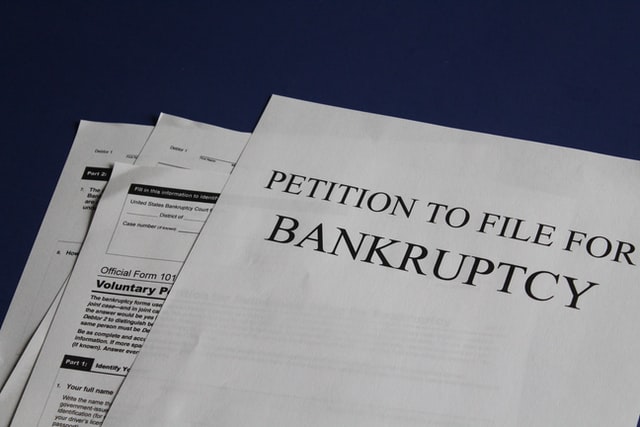
By Matthew Schwartz, CPA/CFF, CFE, CIRA
What is bankruptcy?
Bankruptcy is a federally legislated respite from creditors under Title 11 of the United States Code, also known as the Bankruptcy Code. It is sometimes confused with insolvency, which is a financial condition describing an entity’s dire economic straits. The Bankruptcy Code is divided into nine different chapters, the best known being chapters 7, 11, and 13. Chapter 7 is a liquidation, truly the end of the line. Chapter 11 is a reorganization, the goal of which is to file a Plan of Reorganization detailing when and how much the entity will repay its creditors. Chapter 13 is a payout over time for individuals with regular income.
Why file bankruptcy?
Bankruptcy was once a word signaling the end of a company. Today, however, it can be an important business tool; and a lifesaver for some companies.
Bankruptcy provides breathing room for a Debtor (the company filing bankruptcy) to regroup and restructure its operations and debt and pay old debts over time. It is immediate help for companies that have had a negative blip in operations, revenues or profits, such as loss of a significant market, unexpected and catastrophic expenses, or even the death of a key officer.
While bankruptcy can be an effective business tool, the process is complex and comes with a price tag.
Know the warning signs
It is important to remain aware of the signs that can indicate business trouble. Several areas of business including collections, creditor relations, banking relationships and customer relations can point to signs of trouble.
Collections
Note any change in collections. Even with strong sales, if collections have slowed, take note. The converse is also noteworthy. If collections are currently strong but sales have dropped off, future collections may be in jeopardy.
Creditor relations
If creditors are calling and you have to make excuses for late payments, see this is as a red flag.
Banking relationships
If you seem to be getting a cold shoulder from your banker and not getting the service to which you are accustomed, the bank may be thinking of a strategy to exit from your business. Banks monitor their customers and do not want to wait until it is too late to do anything and they get stuck with a problem loan.
Customer relations
If your customers are becoming more demanding and unreasonable; if they are getting fussy about your product or service, if returns and complaints are running higher than usual, your customer relations can be eroding. Take note.
Identifying internal and external problems
The causes of declining business come primarily in two forms: external and internal. External pressures include the economy as a whole, competition from new or foreign entrants into your market, more efficient production techniques being embraced by competition, new legislation and new technology. Internal pressures can in turn be classified as financial or operational.
Internal financial causes of business failure include overextension of credit, inadequate sales, improper pricing (too high or too low), inadequate handling of receivables and payables, excessive overhead expense and operating costs, insufficient working capital structure, inadequate insurance coverage, fraud and inadequate accounting records and methods. Internal operational causes of business failure include lack of proper planning, poor internal communications, poor marketing, ineffective leadership, inefficient or outdated production methods and lack of response to changing customer preferences.
Four stages of business decline
A business’ decline rarely occurs suddenly. Several stages lead to the point where bankruptcy may occur. Obviously, it is best to identify problems in the early periods.
Initial period
The challenges faced by a company in this first stage of decline include change in product demand, increase in overhead costs, obsolete production methods, increase in competition, incompetent managers in key positions, over expansion without adequate working capital, incompetent credit and collection departments and lack of adequate banking facilities. During this stage the company is experiencing declining profits or actual losses. If problems can be isolated at this stage and the company can be flexible enough to honestly assess its strengths and weaknesses, customer (and creditor) confidence can be retained, working capital and credit facilities may still be sufficient to affect a turnaround and problems will likely be easiest to fix. If a company is not able to halt the decline at this point, it will enter the second stage of decline.
Second stage -Cash shortage
At this stage, the business will find that it cannot meet its current obligations. It is here that excuses to creditors start being used. Business owners and managers may be mislead because the balance sheet may still appear to be healthy, but receivables and inventory are not generating sufficient liquidity. The need for cash becomes paramount.
Third stage – Financial insolvency
In this stage, obligations become seriously overdue. There is significant temptation by management to attempt to borrow its way out of trouble. However, in this stage, most managers cannot cope with the pressures and demands, and raising capital (whether by borrowing or selling ownership interests) without addressing the underlying causes of the decline is usually disastrous. If the causes of the decline can be isolated and corrected, but additional cash cannot be obtained, management may be best served by attempting an out-of-court workout with its creditors. As difficult as it may be, a chapter 11 petition may serve the company if a workout is unsuccessful. However, steps should be taken to ensure that the bankruptcy will not be prolonged.
Final stage – Total insolvency
If a business reaches this stage, its failure is complete. Customers and creditors have lost confidence and cash for liquidating assets is nowhere to be found. At this stage, the only alternative to bankruptcy is usually an Assignment for the Benefit of Creditors in State Court, wherein the assets are assigned to a court appointed individual to liquidate the assets for the benefit of creditors.
Tips on avoiding bankruptcy
A well-prepared, observant business will follow the below steps and have the best opportunity at avoiding bankruptcy.
Have a plan
Business leaders need to seriously decide why they and their employees go to work every day. What is it that you are trying to accomplish? How do you know if you are moving forward? Profit is too misleading to be a guiding principle. Who are your customers and why do they buy from you? When you decide why your company exists, you must then determine your strengths, weaknesses, opportunities and threats (or SWOT). Plan to take advantage of your strengths and opportunities, to correct your weaknesses and to take measures to counteract any threats you face. Within this framework, you will need to set both short and long-term goals. Those goals should be both operational and financial. Financial goals should be expressed as budgets, highlighting the critical need for maximizing cash flow.
Monitor your plan
You must consistently revisit goals. Have you achieved your goals or are you at least moving toward them? Have they become obsolete and do you need to set new ones? How do your budgets compare with your actual results? Your accountant can help you understand and monitor trends and ratios.
Remain flexible
Every business, if it is to survive, must have a way to understand when it is no longer achieving its plan and take steps to either get back on track or to devise a new, more achievable plan. Sometimes very difficult decisions must be made, and if current management cannot make those decisions, it may be necessary to replace management, which may be the most difficult decision of all. If the business is seen as an important entity in its own right and its health is important to its owners and managers, they will take the necessary steps to see it thrive.
Getting Assistance
In the current economic climate, business owners and managers must use every available tool to keep their business healthy and moving forward. Look to your professional service providers for immediate help when you sense a warning sign.
Accountants
Accountants are on the frontlines every day and are usually in a very good position to alert you to signs of trouble and to assist in analyzing the source of problems.
Attorneys
Your attorney will either be able to help or refer you to another attorney who can assist you in holding off creditors while you seek solutions to the problems.
Bank
Another, not as commonly known source of assistance is your bank. Many banks have troubled loan workout departments. If you are open and honest with your bank, have a good working relationship and remain current in your payments, they may be able to help you achieve your goals. After all, your bank wants you to remain healthy so they will be repaid.
continue reading
Related Posts
More than three million residents are eligible for up to
The IRS has provided tax relief for victims of Hurricane
Resources: https://www.irs.gov/businesses/small-businesses-self-employed/virtual-currencies Virtual currency transactions are taxable by law just







